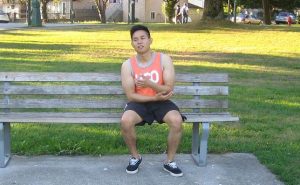Torus fracture is also called as a buckle fracture and it occurs when one side of the bone is pushed in and the other side of the bone is bending out but will not cause a break in the bone. Children and older people are more susceptible to torus fracture and it occurs in any bones of the body but it usually affects the long bones such as the radius, ulna, humerus or femur. The recovery from a buckle fracture is quick compared to other fractures where the recovery takes months.
Causes of buckle fracture
Fractures can happen due to a variety of mechanisms, sudden trauma or fall or it can be caused by some conditions such as cancer. The inclinations of some people by putting out their arms in order to break a fall can lead to a buckle break in bones, especially in the radius and the ulna. Sometimes, a break can also be caused by blunt force trauma or accidents.
Symptoms of buckle fracture

- There is warmth that is accompanied by bruising or redness in the affected areas.
- Pain and swelling of the affected area
- Difficulty in moving or using the injured part of the body
The young and the elderly are most susceptible to buckle fractures because their bones are still soft and more likely to break due to diminished flexibility. Buckle fractures usually occurs when a child falls and lands with an outstretched arm. Among the elderly, osteoporosis can be a cause of an increased risk of having a fracture. Good nutrition is the key in ensuring bone health and strength.
A buckle fracture can cause the forearm bones to be compressed creating a “buckle” or a bump that can be found in the dorsal surface of the bones that can be seen on an X-ray and the opposite side of the bone is normal.
Treatment and home remedies of buckle fracture
With a buckle fracture, the affected arm can be put in a cast for at least 4-6 weeks. Some individuals prefer splinting of the wrist in order to protect the bones and keep them in place while they are healing.
- Elevate the affected area above the level of the heart in order to minimize swelling and pain.
- Place an ice pack or ice placed in a plastic bag that is wrapped in a towel. Leave the ice pack on the affected area for 15-20 minutes at least 3-4 times a day for 2-3 days.
- If the affected area has plaster or fiberglass cast, you have to keep the cast rested on a pillow for the first 24 hours until fully hardened and instruct the individual to avoid scratching the skin under the cast using sharp objects. Check the skin under the cast every day. You can apply a lotion on any red or sore areas and always keep the cast dry and clean.
- If the affected area has plaster splint, the individual should wear the splint as directed. Loosen the elastic found around the splint if the fingers become numb, there are tingling sensations or the fingers turn bluish in color.
- Avoid putting pressure on any part of the cast or splint since it might break.
- Take over-the-counter or prescribed medications to ease the pain.
If you want to properly manage the symptoms of a buckle fracture, all you have to do is enroll in a class on first aid today.
